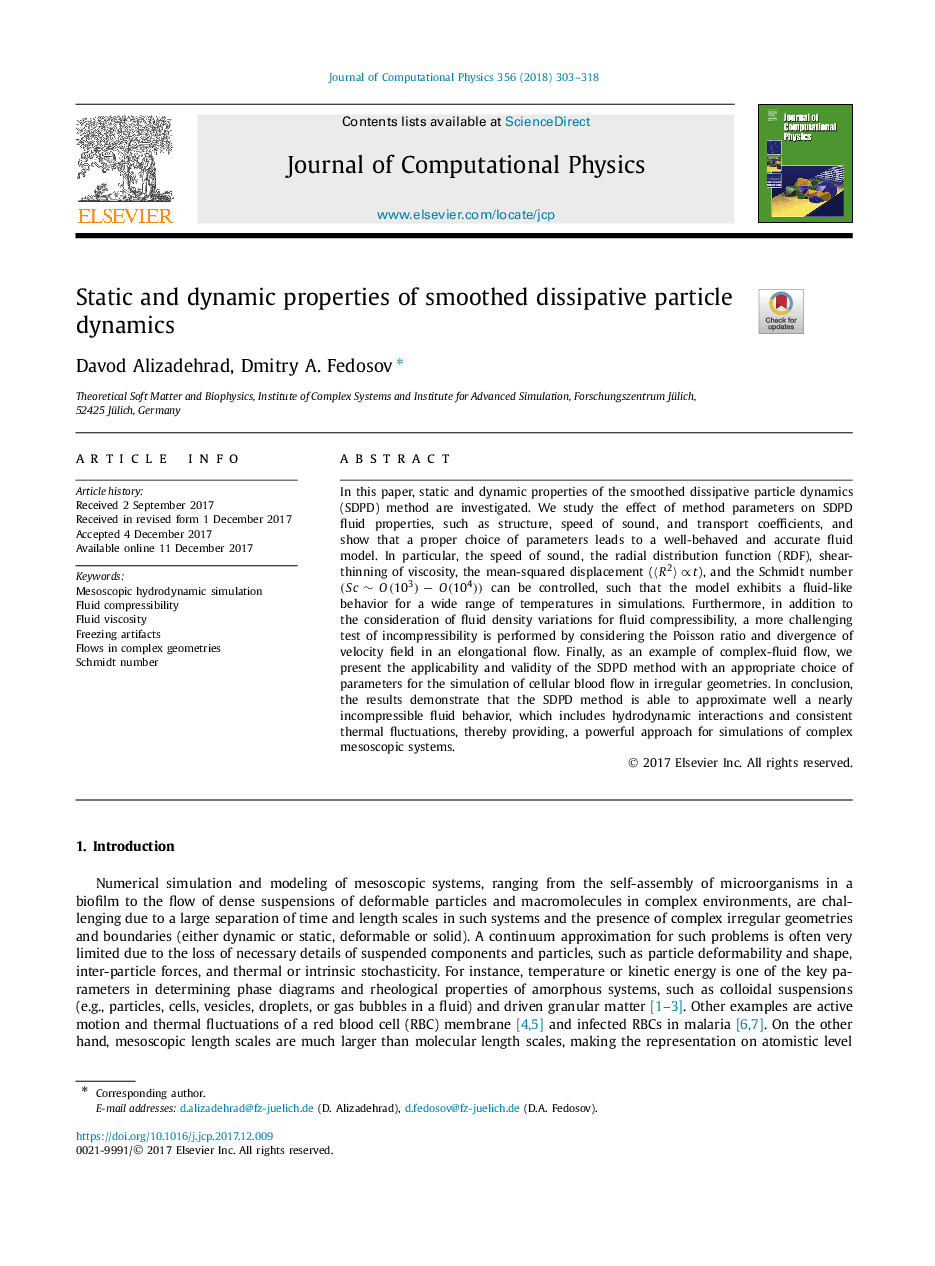| Article ID | Journal | Published Year | Pages | File Type |
|---|---|---|---|---|
| 6929167 | Journal of Computational Physics | 2018 | 16 Pages |
Abstract
In this paper, static and dynamic properties of the smoothed dissipative particle dynamics (SDPD) method are investigated. We study the effect of method parameters on SDPD fluid properties, such as structure, speed of sound, and transport coefficients, and show that a proper choice of parameters leads to a well-behaved and accurate fluid model. In particular, the speed of sound, the radial distribution function (RDF), shear-thinning of viscosity, the mean-squared displacement (ãR2ãât), and the Schmidt number (Scâ¼O(103)âO(104)) can be controlled, such that the model exhibits a fluid-like behavior for a wide range of temperatures in simulations. Furthermore, in addition to the consideration of fluid density variations for fluid compressibility, a more challenging test of incompressibility is performed by considering the Poisson ratio and divergence of velocity field in an elongational flow. Finally, as an example of complex-fluid flow, we present the applicability and validity of the SDPD method with an appropriate choice of parameters for the simulation of cellular blood flow in irregular geometries. In conclusion, the results demonstrate that the SDPD method is able to approximate well a nearly incompressible fluid behavior, which includes hydrodynamic interactions and consistent thermal fluctuations, thereby providing, a powerful approach for simulations of complex mesoscopic systems.
Keywords
Related Topics
Physical Sciences and Engineering
Computer Science
Computer Science Applications
Authors
Davod Alizadehrad, Dmitry A. Fedosov,
